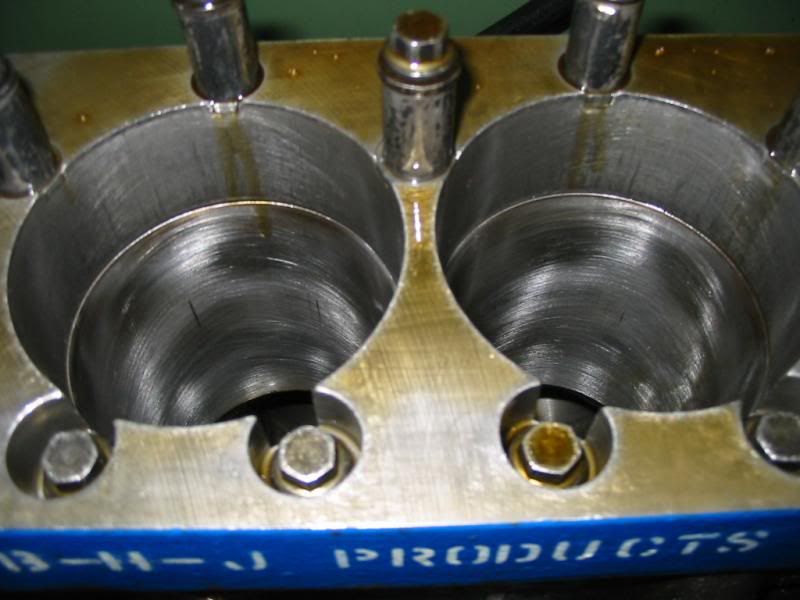Quote:
Originally Posted by Dragsinger

My understanding is that rings are "lapped in" during the manufacturing process. The rings are mounted on a mandrel/fixture and "stroked" through a hardened liner/cylinder.
My experience shows that cylinder wall finish, hone finish, is a vital key to a good seal.
Also, precision piston ring grooves are vital.
|
Back in 68 no one was using MM ring packs like what are available today.
Mahle now offers a 1MM 1MM 2MM ring pack and Mahle rings from what I have seen seal up good on start up.
To achieve good ring seal plate honing is a must which was not used way back when.
A good hone is a must with the proper abrasives.
No matter what you use for a ring its not going to seal if the cylinders are not round once the head is bolted on or the proper finish is not used for the final honing.
Richard Maskins has a good view on honing.
https://video.search.yahoo.com/video...t=mozilla&tt=b
Here are some pics of cylinders that were not plate honed and I don't care who's ring are used in these engine that are not going to seal. Look at the blowby under the top rings.



Shadows under every bolt hole when the torque plate bolted on.
